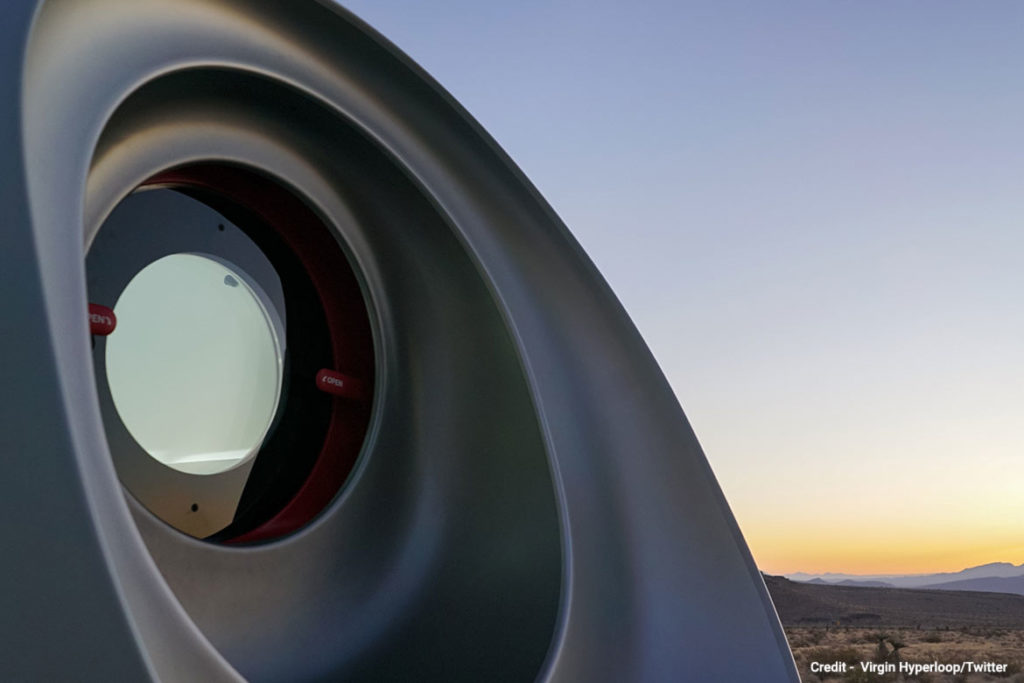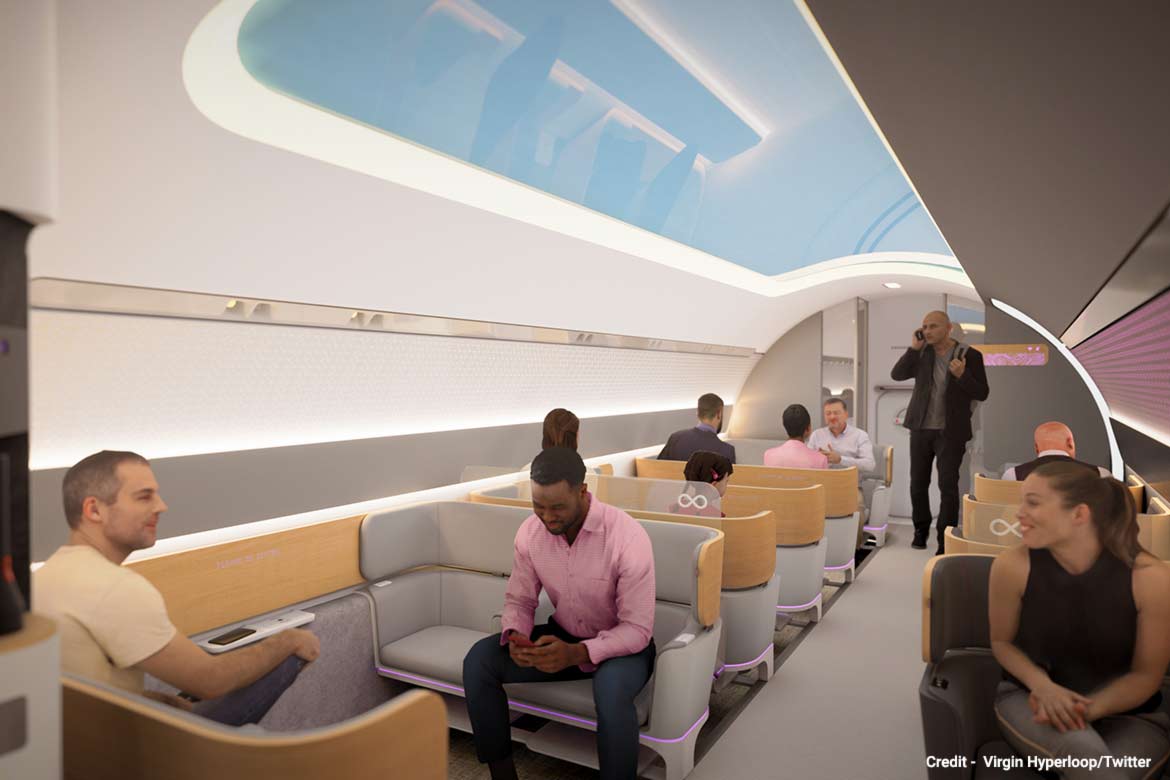Hyperloop technology will redefine the meaning of travelling. Hyperloop is a capsule-shaped magnetic train that can run at a speed of 1000-1300 kilometres per hour. Work on this project has started in many developed countries including India. Once these projects get complete, the travelling time of hours will be truncated to minutes. Hyperloop technology is becoming popular all over the world.
The world’s first and only full-scale Hyperloop test track ‘DevLoop’ has been developed by Virgin Hyperloop along the Nevada Highway in the US. It has been tested 400 times, but so far humans have not been able to travel on it.
What is Hyperloop?
The concept of the Hyperloop, which revolutionized the field of transportation, was given by ‘Elon Musk’ who called it the ‘fifth turn of transportation’. This technique is called hyperloop because in this the transport will take place through a loop whose speed will be very high.
Hyperloop is a new mode of transportation that enables freight as well as people to move safely and on-demand from their origin to their destination.
How does this work?
In this technology, uniquely designed capsules or pods are used in which carrying passengers or loading cargo, these capsules or pods will be driven on electrical magnets in large transparent near-vacuum pipes above the ground. Basically, it runs on the principle of magnetic levitation in a drag-free environment.
Moreover, the pods of passengers in a hyperloop vehicle are provided high speed through progressively electric propulsion inside a low-pressure tube. Which will result in ultra-low aerodynamic drag over long distances at the speed of the airplane.
In this technology of transport, a vacuum-like environment will be created inside large pipes in the absence of air. This will help in travelling in a pod-like vehicle at a speed of 1000-1300 kilometres per hour.
Notably, it is fitted with automation technology to avoid pilot error and meteorological hazards. At the same time, it is a safe and clean system without any direct carbon emissions.
It can also be constructed in underground tunnels and overground pillars to avoid dangerous grade crossings and protect wildlife.

Also read: Tesla Reveals About Its Humanoid Robot That Will Do Wonders On Your Instructions
Countries that started work on it
Many developed countries of the world have come forward to adopt this hyperloop transportation system, such as the US, Canada and Saudi Arabia. In these countries, the company ‘Hyperloop One’ is working to make this vision a reality. Significantly, work is also underway on a hyperloop link project between Dubai and Abu Dhabi.
Why this is much needed?
The growing global economy requires fast, cheap, safe and efficient transportation. The existing modes of transport such as roads, airports and seaports are congested. Adopting this will get rid of heavy traffic. Besides, for the last 100 years, we have not discovered any new mode of transport.
Hence, we especially need ultra-fast, on-demand, emission-free, energy-efficient and high-speed mode of transport with a smaller footprint than other modes of transport.
In such a situation, Hyperloop is the only one with the ability to connect with the current transport medium and integrate without any interruption.
The system is also sustainable with zero carbon emissions. It is believed that by adopting it, greenhouse gas emissions will be reduced by 36000 tonnes in 30 years.
How different is this from a high-speed train?
The primary difference is thatit is two-three times faster than the fastest high-speed train. Trains run on their own schedule and stop at multiple locations, while Hyperloop pods are on-demand and can reach destinations without stopping.
It is environmentally friendly as it has a very low environmental impact and does not generate any direct emissions or noise.
High-speed trains and conventional maglev trains require power along the tracks, making them more expensive means, while hyperloops are less expensive and a much-developed technology.

